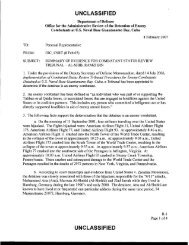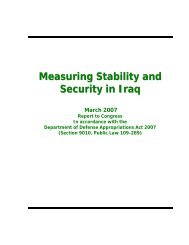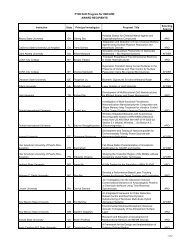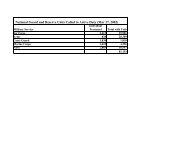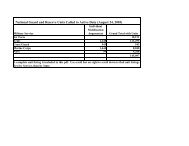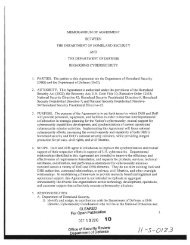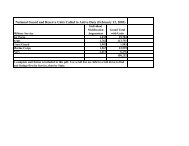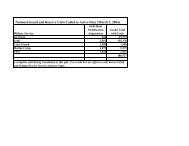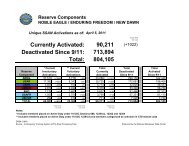Report - United States Department of Defense
Report - United States Department of Defense
Report - United States Department of Defense
Create successful ePaper yourself
Turn your PDF publications into a flip-book with our unique Google optimized e-Paper software.
UNCLASSIFIED<br />
GIRoA has yet to issue specific plans on how it proposes to meet these indicators and in what<br />
timeframe, although some progress in these areas is anticipated ahead <strong>of</strong> the Senior Officials<br />
Meeting to be held in summer 2013 under the Tokyo mechanism.<br />
Although there appears to be marginal improvement in execution <strong>of</strong> the development budget,<br />
execution rates remain low due to a variety <strong>of</strong> reasons, including delay in budget approval and<br />
disbursements from Kabul, administrative and procurement inefficiencies, and the impact <strong>of</strong><br />
differing donor rules and regulations on budget execution. Poor budget execution has a direct<br />
impact on service delivery at the sub-national level, and these obstacles will be addressed under<br />
the TMAF indicator referenced above in order to enhance service delivery at local level.<br />
3.3: REVENUE GENERATION AND BUDGET EXECUTION<br />
Increasing domestic revenues is a main objective <strong>of</strong> the government as domestic revenues<br />
continue to fall short <strong>of</strong> expenditures and international assistance is expected to decline in<br />
coming years. The total Afghan national budget for 2012 was $4.9B, with an operating budget<br />
<strong>of</strong> $2.7B, an 11 percent decrease compared to 2011 (due mainly to the shortened fiscal year).<br />
The development budget was $2.2B, and represents an increase <strong>of</strong> 41 percent over the previous<br />
year. As transition continues, the necessity to absorb additional expenditures for security, health<br />
and education services, and operational and maintenance costs, as reconstruction/infrastructure<br />
projects are placed on-budget, will further widen the fiscal gap.<br />
With help from international donors such as USAID, revenues collected by GIRoA have steadily<br />
increased by more than 200 percent since 2005. The revenue level at the end <strong>of</strong> FY2012 was<br />
$2.2B, and essentially equal to the FY2011 level. However, the level can largely be attributed to<br />
shortfalls in custom duties and import taxes and the shortened fiscal year (see footnote thirteen).<br />
In FY2012, the revenue level still equaled 11 percent <strong>of</strong> GDP (nearly meeting the IMF target). 30<br />
Revenue collected in Q2 and Q3 <strong>of</strong> 2012 totaled $987M, 16 percent higher than the amount<br />
collected over the equivalent period a year ago, but short <strong>of</strong> the $1.1B year-to-date target for<br />
FY2012. With the gap between revenue and expenditures increasing, finding new sources <strong>of</strong><br />
revenue has become more urgent. To that end, donors have focused on helping the government<br />
improve taxpayer compliance and tax administration. The MoF plans to introduce a Value‐<br />
Added Tax (VAT) in 2014, with support from DFID, USAID, and the IMF. If successful, the<br />
VAT could increase government revenues by 1 to 2 percent <strong>of</strong> GDP by 2021 (World Bank).<br />
Tax levying and collection is an area that is beginning to show positive results. New taxes and<br />
corresponding administrative implementation are now underway; these include property taxes,<br />
customs tariffs, business taxes, and agriculture surplus taxes. These taxes produce 82 percent <strong>of</strong><br />
domestic revenues, with non-tax revenue at 18 percent.<br />
With regards to business taxes, several issues will require time to resolve, including the large<br />
informal economy that has grown over the past decade, corruption, and the remoteness <strong>of</strong><br />
portions <strong>of</strong> the Afghan population.<br />
30 It should be noted that the IMF revenue target for Afghanistan is 12 percent <strong>of</strong> GDP for 2012 and 15 percent by 2015.<br />
132





